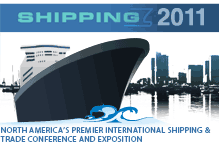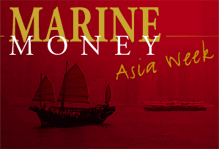Prospects for the Panamax Class of 2001
With opportunistic shipowners flocking back to Asian shipyards to place orders for bulk carriers, we thought it a good time to pause and do some math. Now we like “instinct” and “cheap Yen” and “historically attractive prices” as much as the next guy, but we thought it would be interesting to see if these ships are so attractive that they could financed in the capital markets, or by non-shipping providers of capital.
In this article, we’re going to take a look at the panamax market because its rates and values are considered by many to be the bellwether of the dry cargo industry. According to Clarkson, these workhorses carry about 30% of all dry bulk cargoes, the majority of which consist of iron ore, grain and coal. Specifically, with more than 10% of the fleet delivered in 2001, we thought it would be interesting to take a look at the whopping $2.4 billion “Panamax Class of 2001″ and analyze the daily cash break-even for their first five years in service. Like most of the articles in Marine Money, the charts and graphs pretty much speak for themselves. For this exercise, we’ve assumed that ship contracts were executed on conventional payment terms and that they were either dollar denominated or swapped into the dollars upon delivery. Daily operating expenses are our own estimates of the average costs throughout the first five years. We also include accrual for dry docking expenses.
We’re conservative by nature; to come up with our cash break-even figures, we’ve assumed that debt on the ships is amortized in straight-line fashion over 15 years to a balloon based on a scrap value of $130 per lightweight ton. We also assumed a blended capital cost of 9% of all capital employed (ie 100% of the newbuilding cost) over 15 years. While short-term LIBOR may be low at the present time, we do not factor in cheap interest rates since they can’t be swapped at these levels and because they won’t stay at current level throughout the course of a financing. As one investor friend of ours said “the entire shipping industry is a few interest rate ticks away from disaster; the only money being made today comes from cheap floating rate debt. If one year LIBOR goes to 5%, banks and owners are dead meat.” Nonetheless, it is worth noting that today’s cash break-even rates are actually lower than those that appear in our big charts.
This is only an excerpt of Prospects for the Panamax Class of 2001
Content is restricted to subscribers. To continue reading please Log-In or view our subscription options.
Related Archive Files
Leave a Reply
You must be logged in to post a comment.







